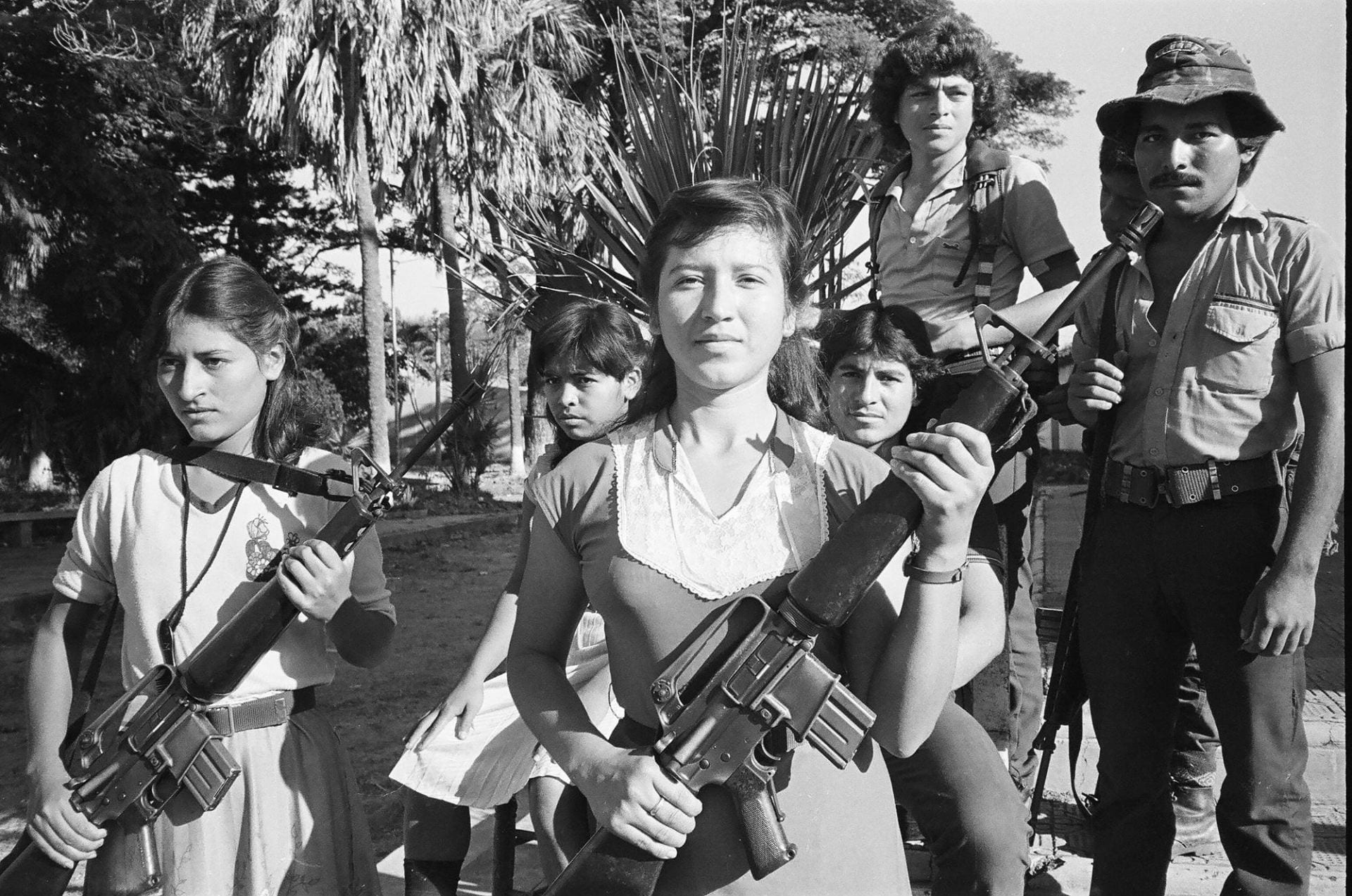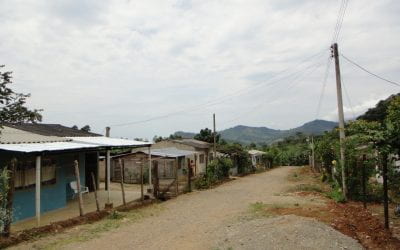An Exploration of the Mexican Health Care System
From the Perspective of a Breast Cancer Survivor in a Tertiary Health Center

Runners gather in Mexico City for Breast Cancer Race For A Cure. Photo courtesy of francerobert2001.
Summary: The recent creation of Seguro Popular—a governmental program granting basic health services to millions of Mexicans previously uninsured—has newly enabled thousands of Mexican women afflicted with breast cancer to access treatment. With the growing prevalence of breast cancer survivors, the question now arises of how best to maintain their health and address their needs. An exploration through a renowned public tertiary cancer center in Mexico City brings light to some of the challenges still faced by post-treatment Mexican breast cancer survivors.
The day at the breast cancer clinic in Mérida Hospital begins at 8:30am, when patients are told to arrive despite the fact that the doctors will not begin giving consultation until 9:30am. No one really knows why the schedule is set this way; it is just the way it has traditionally been done.
On a typical consultation day, doctors will see around 16-25 patients each, with 8-15 minutes allotted for each visit. Because it is hardly ever the case that a consultation is completed within 15 minutes, especially if it is the patient’s first visit or if she is being informed of a pathological finding, patients are very rarely seen on time. In fact, it is not uncommon for a patient to be called from the waiting area 3-4 hours after the originally scheduled appointment time. The fact that patients are unsure of when they are going to be called prevents them from making better use of their waiting time and venturing to the cancer support center, where they could receive counseling services and/or attend informative classes. Whether it is because of the great distance traveled or the money spent trying to get to Mérida Hospital, they simply do not wish to risk missing their appointment by leaving the waiting area.
At the first visit, each patient is walked through a brief orientation with a navegadora, one of two women who work to ensure patients understand the services available to them, what procedures they need to fulfill, and where. This navigation program was created around two years ago and is an excellent way of helping patients who are unfamiliar with the system become acquainted with the process of receiving services. The aim of the navegadoras is to help patients learn how to independently address any problems arising along their journey through cancer treatment. However, one challenge the navegadoras often face in achieving this goal is that many patients know neither how to read nor write, much less have ready access to a phone or computer. Thus, it is difficult for the poorest patients, who comprise the majority, to take advantage of any information transmitted online or by phone.
After her first consultation with the doctor, the patient is expected to receive a series of tests to confirm her breast cancer diagnosis (Seguro Popular will only cover the patient’s treatment if she receives a confirmed diagnosis from a biopsy sent to the pathology lab). These include, but are not limited to an abdominal ultrasound, MRI, mammography and X-ray, depending on whether or not it is suspected that the cancer has metastasized. The patient is responsible for paying for these tests according to her financial means, as assessed by the social workers during an interview conducted after the patient’s first consultation. It is often the case that the patient—not knowing what to expect before arriving at Mérida Hospital—did not anticipate having to bring a lump sum of money in order to be examined. This quickly becomes a problem for those patients who traveled from afar to arrive at the cancer center—it is not easy for them to quickly return to their homes to retrieve the money, which they very well may not have, and make the trip back to the hospital. Patients who do not have the money to fund these tests usually ask for financial help from other family members. They are unable to receive the necessary tests to achieve a confirmed breast cancer diagnosis, and subsequently funding from Seguro Popular, until they are able pay for the preliminary tests on their own.
There is an approximate 15-day turnaround for receiving a confirmed diagnosis after undergoing the necessary preliminary tests. Consequently, assuming the patient was able to fund the initial testing, she will be scheduled for another visit within 15 days of her first consultation. If the results indicate that the patient does in fact have breast cancer, she will be eligible to begin her treatment regimen during her second visit.
As I accompanied one of the navegadoras in her patient orientation, I made several noteworthy observations. First, the information that they provide to patients is extremely basic and brief (dispensed within approximately twenty seconds), and is often provided as the navegadora is simultaneously filling out a brief questionnaire. The navegadoras tell the patients about the navigation program and its goals, and then they give the patient additional pieces of information as they run the patient through different areas of the hospital. They answer any questions the patient asks them to the best of their ability. One of the most common questions that the navegadoras receive from patients is in regard to catheters. The patient must get a catheter installed in order to receive chemotherapy, and she will be presented with two options: a more expensive catheter (not covered by Seguro Popular) that is placed under the skin, or a cheaper catheter covered by Seguro Popular that protrudes out of the skin. On one occasion, when asked about the advantages and disadvantages to using each catheter, one of the navegadoras replied very simply to go with the latter option because it was free.
The navegadoras typically see around 120-130 patients per month—the majority of whom originate from Mexico City or the state of Mexico, rely on Seguro Popular, and have received between a primary and secondary level of education. After much observation and discussion with the navegadoras and patients alike, it became clear to me that the patients confided more in the navegadoras than they did the doctors. One of the navegadoras explained to me that for many of the patients, the white coat has become a symbol of intimidation. Oftentimes, when patients ask doctors questions, the doctors will ignore the patients or won’t bother explaining what treatment is going to be given and why. When I asked the doctors about this, they admitted that this frequently occurred because of the small time window allotted for each visit. As the patients grow accustomed to this interaction, they eventually stop asking questions of the doctor altogether. Thus, the paternalistic view of the omniscient doctor and the subordinate patient is maintained. Because the navegadoras don’t wear a white coat, patients tend to feel they are more accessible and willing to answer questions/address concerns
After the patient completes her orientation with the navegadora, she inherits all responsibility of attending future appointments and seeking out available services. Patients are not given their clinical information unless they request it, which makes it difficult to receive informed care if they are seen at other cancer centers. The most information patients are given consists of a small booklet (“el carnet”), which contains the patient’s name, age and the dates, times, locations and details of past and future appointments.
Mérida Hospital does offer weekly support services to breast cancer survivors, including classes, talks, workshops, conferences and information on support groups (Grupo Reto is one of the groups I became acquainted and it has branches located across Mexico). There is also a hotline available Monday through Friday from 8:30-5pm for cancer information, which now includes psychological counseling services in addition to general information. However, very few patients take advantage of these services in part because of lack of awareness that they exist, and in part because, as mentioned previously, many patients are hesitant to leave the waiting area for fear that their name should be called while they are not present.
Discussion
The creation of Seguro Popular was a great achievement for the Mexican health care system. However, with this new advancement comes a new set of responsibilities—among them ensuring that the needs of the increasing number of breast cancer survivors are met. My exploration of the breast cancer clinic at Mérida Hospital revealed several issues that still need to be addressed. These include: long wait times created by the increased number patients eligible for cancer treatment and not enough, staff, time and resources, the seemingly apathetic mentality of doctors toward patients in regard to questions and concerns, the little patient awareness of available survivorship services, the absence of guidance for patients after they have received cancer treatment. These are problems are mainly infrastructural and could easily be addressed through the implementation of health policy changes.
Because Mérida Hospital is one of the most renowned public institutions in Mexico for providing care to the insured and uninsured alike, it sets the standard in regard to quality service, and as a result, it is very likely that the challenges uncovered in this exploration are much greater and more numerous at less reputable public institutions.
Related Articles
Displacement and Community Organizing: Shifting Memories and Identities Around a Mocoa Kitchen Table
We were having lunch at María’s house in Mocoa, Colombia, when it struck me how much the story of her past was shaped by the legal framework that defines her today as a victim, and when I first met her, in 2011, as an internally displaced woman. Over the extended year of our collaboration, I witnessed Maria’s subtle transformation to fit the shifting legal frame. …
Discovering Dominga: Adoptions and Tangled Truths
In the open central market one morning in Rabinal, Guatemala, 28-year-old Denese Becker picked up a bolt of corte cloth, woven fabric used by Achi Maya women to make their skirts, and brought it to her face. She closed her eyes. “My mother,” she said. “This smells like my mother.” I knew which one she was talking about….
Because They Were Taken Alive: Forced Disappearance in Latin America
In Guatemala City, a single garage light has been burning continuously for almost thirty years. The garage’s owner, a woman now in her nineties, cannot bring herself to turn it off. On May 15, 1984, her son, Rubén Amílcar Farfán, left the house early as he usually did, headed for the university. But later that afternoon, friends of his rang the doorbell of the family’s house, anguished, to report the worst …





